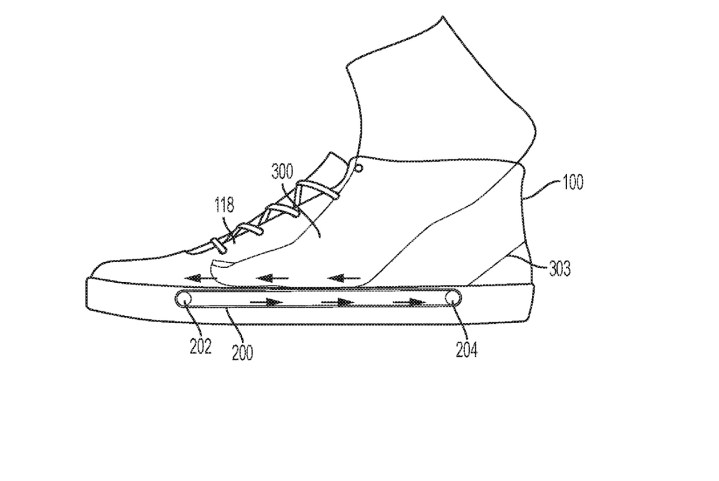
Nike is proving itself to be the master innovator when it comes to footwear once again, but this time it has nothing to do with 3D-printed soles or recycled materials for the upper. Instead, it’s all about the treadmill. You may no longer need to hit up the gym to get on the running machine — you’ll just need to put on your shoes. As per a new patent filed in early May, Nike is looking to place a “rotatable conveyor element” in the sole of your shoe. No, it’s not to help you work out. Rather, it’s to help you put on the shoe a bit more easily.
The concept contained within the patent includes an “insole, an upper configured to form a space between the upper and the insole,” which in turn is “configured to admit and secure a foot of a wearer.” And then, most importantly, there’s the conveyer belt portion, or for our purposes a mini treadmill. This little machine is “configured to rotatably engage a body part of the wearer as the foot enters the space and draw the foot into the space.” So no longer will you have to wrestle with your shoe to get it on. Instead, your foot will slide right in.
Also included in the patent is a controller mechanism. After all, you wouldn’t want your conveyer belt/mini-treadmill to be running all day long. As such, Nike has described a controller that is “coupled to an activation mechanism, such as a switch or mechanism to detect the presence of a foot.” Such mechanisms could be a magnetic field sensor that senses a change in the capacitance, indicating that a foot is nearby. It could also be a switch either inside or outside the shoe that you would need to activate in order for your foot to be conveyer-belted into the shoe.
We’ll give Nike some more time to figure that one out.
The conveyer belt mechanism could be used to help you take your shoe off at the end of the day, saving you precious seconds once you walk though the door. As is the common case with these cases, just because Nike has filed a patent for such an invention doesn’t necessarily mean it’ll come to fruition. But like many out-there patents, we wouldn’t mind seeing it happen.


